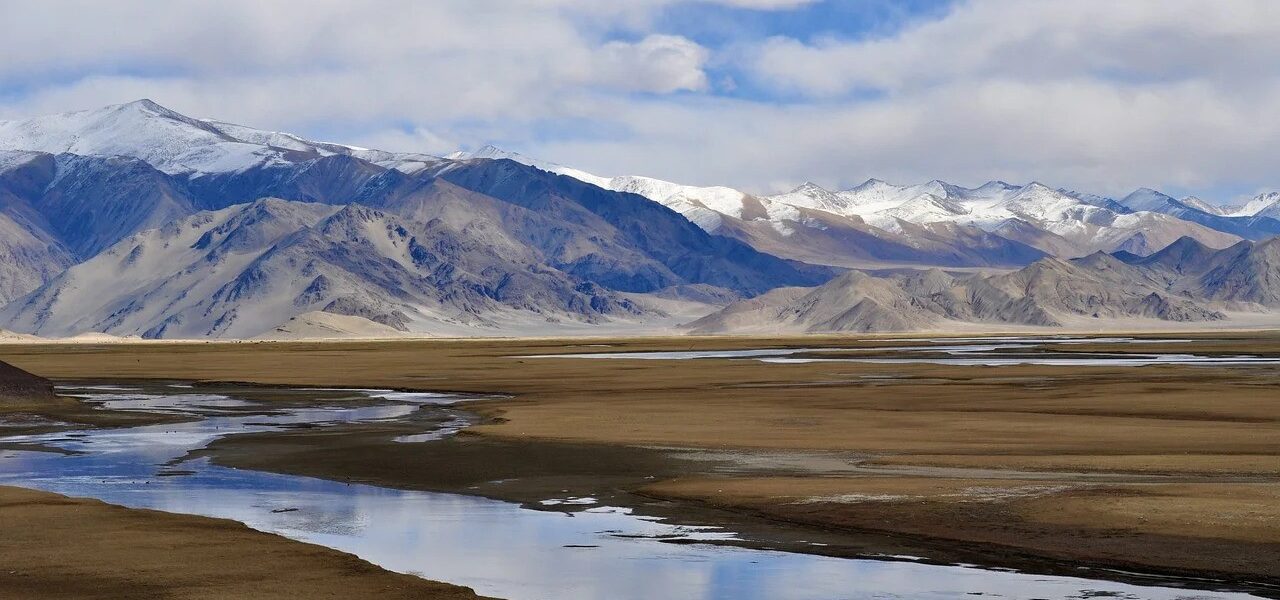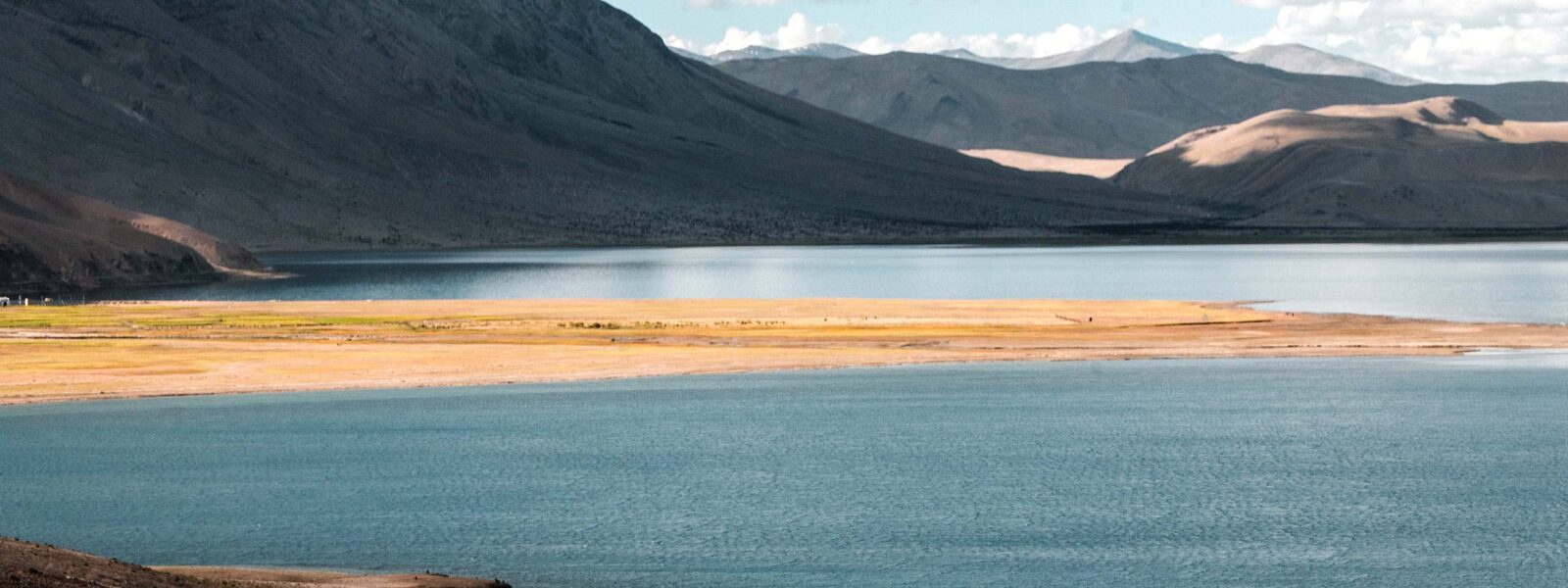A Journey into the Heights: David Rose’s Himalayan Dream
“Are we there yet, Dad?” This query, simple and filled with youthful impatience, echoed in my mind as I stood beneath the shadow of the Himalayas, now more than seventeen years since my last trek through these rugged lands. David Rose, once a passionate adventurer, yearned to revisit the Himalayas. Yet, as he planned a week-long expedition through the remote terrains of Ladakh, he wondered whether his city-loving teenage daughters could truly embrace the challenge ahead.
The rain intensified as we stood on the brink of our adventure, the Jeep retreating down the valley, its exhaust fading into the distance. Before us lay a foaming river, flanked by towering canyon walls. It marked the beginning of a journey that would span a week, crossing passes that soared to 5,000 meters above sea level. With a heavy rucksack slung over my shoulder, I turned to my daughters, a mixture of excitement and trepidation in my voice. “Well, children. Shall we begin?”
Two decades earlier, I had trekked through the Himalayas, exploring Nepal and Bhutan. The grandeur of the mountains and the profound Tibetan Buddhist culture had left an indelible mark on me. Last summer, as my daughters, Nushy and Tushy, reached the ages of 15 and 12, I felt they were finally ready for this journey.

Friends with mountaineering experience cautioned us, questioning our ambition. The high peaks of Asia are unforgiving, and once committed, there is no turning back. The girls, though accustomed to camping and climbing modest fells in the Lake District, were avid city dwellers. Tushy, in particular, had a fondness for television. Despite their enthusiasm for the trek, the reality of the challenge ahead was yet to fully sink in.
Planning our adventure was less daunting than anticipated. The necessity of traveling during school holidays significantly narrowed our options. July and August, notorious for monsoons in Nepal, Bhutan, and much of India, presented less favorable conditions for trekking. Ladakh, on the northern edge of the main Himalayan range, promised an alternative. It is often referred to as a ‘high-altitude desert,’ shielded from the monsoon rains.
In Ladakh, the stark, rocky landscape of Jammu and Kashmir offers little in terms of verdant lodges or teahouses. Trekking here means everything must be transported: food, bedding, and shelter, often by pack animals. Human porters are a rarity in this rugged terrain.

In Leh, the capital of Ladakh, several local agencies offered their services. Yet, from 4,000 miles away, their quality was uncertain. Opting for a British-organized tour group seemed less appealing; it would force the girls to match the pace of the entire group. Instead, KE Adventure Travel, a seasoned trekking company, proposed a custom expedition. For a price comparable to one of their standard packages, they would handle everything from flights to Delhi and Leh, acclimatization days, the trek, and even a dash of sightseeing in Delhi and Agra. All that remained was to get us to India, where off-season fares on British Airways were surprisingly affordable—barely £400 return from London.
Leh, which I had last visited as a gap-year student in 1978, had transformed dramatically. What was once a modest village of two streets had evolved into a bustling town of 25,000. Despite its growth, Leh retained its charm. On our first evening, we relaxed on a rooftop terrace, savoring lassi and momos. The view stretched from the snow-capped Stok Kangri to Leh’s medieval palace and a distant Buddhist gompa perched on a granite crag, bathed in the golden hues of sunset. Prayer flags fluttered between these landmarks, connecting the sacred with the worldly.
The warmth of the people remained unchanged. Leh, even as a burgeoning town, felt less pressured compared to many Indian cities. Having flown directly from Delhi to this altitude of 3,500 meters, we needed to acclimate. The days were spent exploring—relaxing under apricot trees, browsing local bookshops, and (for the girls) checking in on social media.

Our acclimatization was complemented by several excursions. We visited monasteries adorned with beautiful thanka paintings, where monks balanced prayers with mobile phone conversations. We traversed the Khardung La, the world’s highest motorable pass, and spent a day rafting down the Indus River. The descent through a steep gorge was exhilarating, culminating in a picnic with a view of the vast, empty mountains.
Yet, this was merely a prelude. On the fifth day, we packed up and drove east, following the Indus towards Tibet, past the great monasteries of Thikse and Hemis. We aimed to explore the Shang Valley, crossing our first pass into uncharted territory before looping back to Leh along the flanks of the Stok Kangri massif.
Our caravan, led by Kunzang, a former accountant turned mountain guide from Darjeeling, included his assistant Dorje, a cook, two sous chefs, and drivers for our seven ponies and two donkeys. Our backpacks held only essentials for the day—waterproofs, clothes, and cameras.
The preceding fortnight had been marked by severe rains in Ladakh, causing widespread damage. Though we experienced mostly sunny skies in Leh, the rain returned just before our trek began. It continued intermittently, washing away the bridge across the Shang and requiring us to ford the river—a chilly, knee-deep immersion with boots draped over our necks. The shifting climate, influenced by global warming, had already begun altering the region’s weather patterns.
Our adventure had only just begun, with the promise of unspoiled landscapes and the allure of the unknown awaiting us.
The Comfort of the Unexpected
As the evening approached, our weary feet found solace in the carefully prepared camp, nestled in a verdant meadow on the outskirts of a small hamlet. Our dedicated crew had set up the camp long before our arrival, and the sight of the warm, inviting tents was a welcome relief. Within moments, bowls of steaming water and mugs of hot noodle soup appeared, dispelling any lingering anxieties about the trek being too harsh for my teenage daughters. The steam rising from our soup seemed to chase away any doubts, and the warmth of the meal offered a comforting embrace.

As twilight descended, the sky cleared, revealing a crisp, starlit expanse. The temperature dropped precipitously, and we gathered around a table in our cozy mess tent, illuminated by the soft glow of gaslight. Kunzang, our guide, joined us for our inaugural game of Scrabble, a tradition that would soon become a nightly ritual. Each evening, our cooks delighted us with a diverse array of dishes—curries, Chinese and Italian fare, fresh salads, cheese, and on one memorable night, a homemade apple pie. As we drifted off to sleep on our plush foam mats, the gentle tinkle of bells around the necks of grazing sheep lulled us into a peaceful slumber. Beyond that, the only sound to break the night’s silence was the whisper of the wind.
This trek was a far cry from the backpacking adventures I remembered. Mornings began at six with hot water and coffee, and most days we enjoyed a cooked breakfast outdoors, bathed in the morning sun with the snow-capped peaks seeming close enough to touch. By eight o’clock, we set off, meandering at a leisurely pace through increasingly dramatic landscapes. To ensure the girls’ comfort, a spare pony was brought along. Tushy used it briefly as we climbed a pass, but upon reaching the top, she was eager to prove her stamina by racing me to a nearby peak. Kunzang, with his knack for child psychology, provided the occasional motivational boost when needed.
On our second day, we ventured from the fertile barley fields of the Shang Valley to a narrow path threading through the cliffs. Each bend in the trail revealed new vistas—towering snowy peaks straddling the borders of Tibet and Pakistan, and closer by, a range of contorted purple crags. The air was so clear it was almost unreal. For six days, we encountered only a handful of shepherds, taking advantage of the lush grass and flowers brought by recent rains. The strict regulations against littering in Ladakh appeared to be well adhered to.
Atop the Shang La, amidst cairns and fluttering prayer flags, we spotted an eagle, and later, two majestic lammergeiers—vultures circling as if intrigued by our lunch leftovers.

On the penultimate morning, as we trudged toward our final and highest pass, the clouds returned. By the time we reached the saddle, visibility had diminished to less than 100 meters, and we were buffeted by snow, then hail, followed by a relentless downpour that lasted about 45 hours. The descent was a slippery, treacherous affair, with the landscape morphing into a living Japanese watercolor—mist-shrouded rock towers and new streams emerging everywhere. At our final sodden campsite, beneath a towering rock face, our cooks surprised us with a cake adorned with the cheerful message “We Are Family.”
The following day, as we arrived at Stok village—a place boasting not only electricity but also a teahouse and a strong mobile phone signal—the abrupt return to civilization began. A bumpy ride to Leh revealed a hotel that now seemed remarkably luxurious compared to our departure. The rain paused just long enough for our flight to Delhi, where our package included two nights at an establishment reminiscent of Claridge’s. As we luxuriated in comfort, our minds were already plotting our next adventure. The unanimous verdict from the girls: the only flaw in our trek was that it was all too brief.
The Reference Article もう着いたの、パパ?







